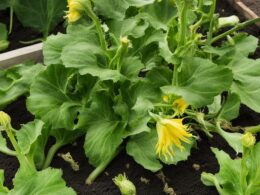Pruning petunias is a vital aspect of petunia care that can greatly enhance their blooming success. By following proper pruning techniques, you can ensure vibrant and long-lasting blooms throughout the growing season. Pruning not only helps maintain the health and appearance of the plants but also encourages new growth, resulting in a more abundant display of colorful petals.
Effective pruning techniques are essential to prevent petunias from going to seed too quickly. This allows the plants to focus their energy on producing more blooms instead. So, if you want to enjoy a continuous show of stunning petunia flowers, it’s crucial to know how to prune them effectively.
In the following sections, we will guide you through the process of pruning petunias step by step, ensuring blooming success and lush, healthy plants. Alongside pruning, we will also touch upon other crucial aspects of petunia care, such as providing proper sunlight, watering, and fertilization, to help you create a thriving environment for your petunias.
Proper Sunlight, Watering, and Fertilization for Petunias
Ensuring that petunias receive the right amount of sunlight, water, and fertilizer is essential for their overall health and blooming success. By following these tips, you can provide the optimal conditions for your petunias:
- Sunlight Requirements: Petunias thrive in full sun, typically requiring at least 6-8 hours of direct sunlight each day. Plant them in a location where they will receive ample sunlight to promote healthy growth and abundant blooms.
- Watering: Petunias have moderate water needs and should be watered regularly to keep the soil evenly moist. However, be cautious not to overwater, as this can lead to root rot. A good rule of thumb is to water when the top inch of soil feels dry to the touch.
- Fertilization: To promote robust growth and vibrant blooms, it is important to fertilize your petunias regularly. Use a balanced, slow-release fertilizer or a water-soluble fertilizer diluted according to the package instructions. Applying fertilizer every 2-4 weeks will keep your petunias well-nourished.
By providing the right amount of sunlight, water, and fertilizer, you can ensure that your petunias thrive and reward you with a stunning display of colorful blooms throughout the season.
What Pruning Techniques Can I Use to Ensure Blooming Success for Knock Out Rose Trees?
When it comes to knock out rose tree care, proper pruning techniques can make all the difference in ensuring blooming success. Regularly remove dead or diseased wood, and trim back crossing branches to improve air circulation. Additionally, lightly prune in late winter to promote new growth and a beautiful bloom come springtime.
Reviving Potted Petunias for Lush Blooms
If your potted petunias are showing signs of being leggy and sparse, don’t worry. You can easily revive them and bring back their lush and abundant blooms. With a little care and attention, your potted petunias will regain their vitality and beauty. Follow these steps to maintain and rejuvenate your potted petunias:
Step 1: Prune for Growth
Start by pruning your petunias to encourage new growth. Use clean and sharp pruning shears to remove any dead or wilted flowers, as well as any leggy or overgrown stems. Trim the stems just above a leaf node to promote branching and bushier growth. Don’t be afraid to prune heavily if needed, as petunias respond well to being cut back.
Step 2: Provide Optimal Care
Give your potted petunias the care they need to thrive. Ensure they receive at least 6 hours of direct sunlight each day, as petunias are sun-loving plants. Water them regularly, keeping the soil evenly moist but not waterlogged. Use a well-draining potting mix to prevent waterlogged roots. Additionally, apply a balanced liquid fertilizer every two weeks according to the packaging instructions to provide essential nutrients for healthy growth.
Step 3: Maintain Vigilance
Keep a close eye on your potted petunias, especially during hot and dry periods. Water them more frequently if the soil dries out quickly or the plants show signs of wilting. Remove any spent flowers promptly to encourage continuous blooming. Regularly inspect the plants for pests such as aphids or whiteflies, and take appropriate measures to control infestations.
By following these steps, you can revive your potted petunias, encouraging them to produce lush and vibrant blooms once again. With proper care and maintenance, your petunias will continue to display their beauty and add a touch of color to your outdoor space.









